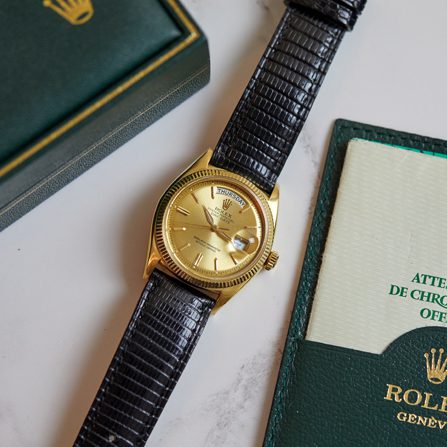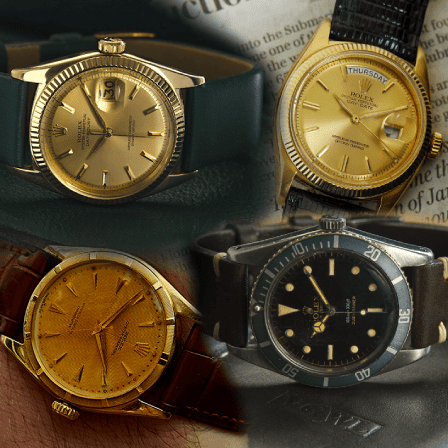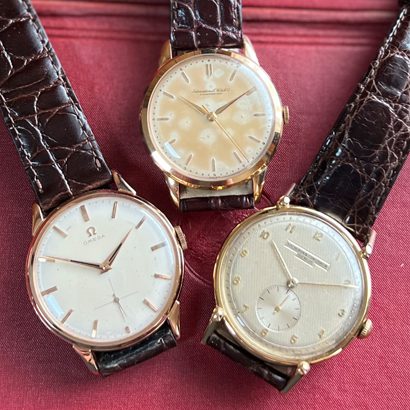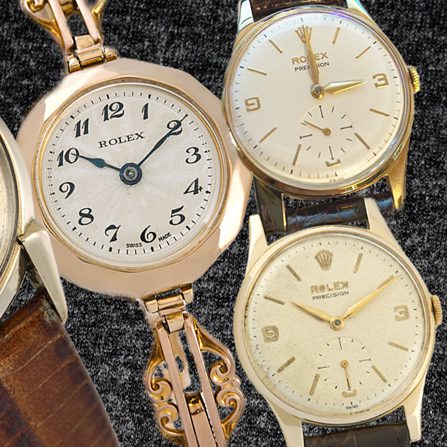FIVE MOST ICONIC
VINTAGE WATCHES
What Makes a Watch Iconic?
We all have our favourite vintage watches, but what defines a vintage watch as iconic? When we speak of an icon we usually think of a person or thing that serves as a representative symbol that stands out above the rest.
The word ‘icon’ has a Greek origin meaning ‘image’, it’s derived from the Greek word “eikon” which means image or resemblance. It can be referred to as a person, symbol, thing, or image that is widely admired especially for having great influence or significance in a particular sphere.
With that broad definition in mind, it still isn’t easy to narrow down our top 5 most iconic vintage watches. The world of watchmaking has given birth to dozens of iconic watches over the century plus of its rich trailblazing history.
To whittle down the short list to the final five listed below, we had to define more criteria for the most iconic vintage watches of all time. In choosing our shortlist, we carefully considered the following criteria:
- Watch models that have stood the test of time and are still in production today
- Watches that stand out as distinguished due to design or engineering innovations
- Have become world famous and remained fashionable throughout the years
- Historically significant due to their involvement in pop culture and/or sporting or historical events
So, without further ado, we bring you five of the most iconic vintage watches of all time, listed in no particular order, according to the team at Vintage Gold Watches:
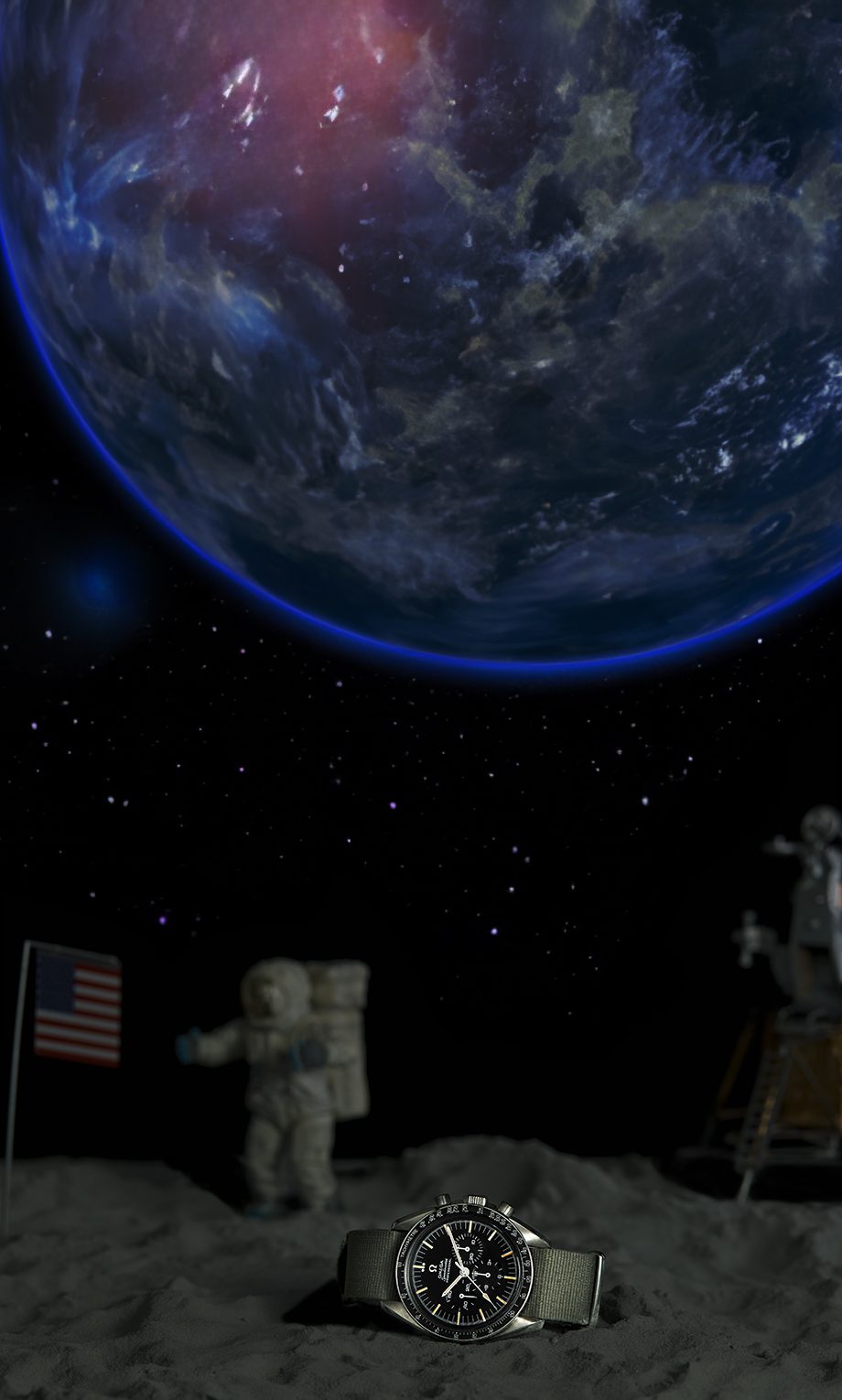
Omega Speedmaster
Few watches are as iconic as the Omega Speedmaster. Like all great designs, it has stood the test of time, ageing gracefully and gaining only further acclaim as the years have gone by.
Originally produced in 1957 with reference CK2915, it wasn’t Omega’s intent for it to be worn on the moon. Instead, it was created as a sports chronograph for motorsport and other sporting events, slotting perfectly into the brand’s line-up of the time which included the Seamaster and Railmaster. The chronograph was also useful for those who needed to time events and tasks outside of sports, such as Doctors, and so it has become one of the greatest tool watches in watchmaking history.
When the Speedmaster first launched, it stood out amongst its petite peers. Its easy-to-read design, inspired by the dashboards of the Italian sports cars of the time, was an instant hit.
It was innovative, too. It was the first watch to feature a tachometer separate from the dial. Placing it on the bezel it freed up space, giving a cleaner, more streamlined appearance that became a big hit, making it the first mainstream chronograph. It was extraordinary compared to the delicate dress watches that were popular during the period. To this day, the design and look of the watch has barely changed since it was first introduced to the market.
Solidifying the Speedmaster’s legacy was its role in the space race. The first Omega watch worn outside of Earth’s atmosphere belonged to astronaut Walter Schirra, only the fifth American to go to space in 1962. NASA officially began watch testing in 1965 and subjected 4 different luxury brand watches to 11 extreme tests. The Omega Speedmaster was one of them. The only one to come out of the tests intact was the Speedy. You can see an excerpt from the NASA report here.
But it was, of course, the 1969 Apollo moon landing that emblazoned the Omega Speedmaster across the memories of millions when Edwin “Buzz” Aldrin took the Speedmaster to the moon, strapped to his wrist with a wide band of Velcro. Sadly, this historic watch was lost on its way to the Smithsonian and has never been recovered. From this day on, the Speedmaster became affectionately known as “The Moonwatch” and it has been cemented in our hearts ever since.
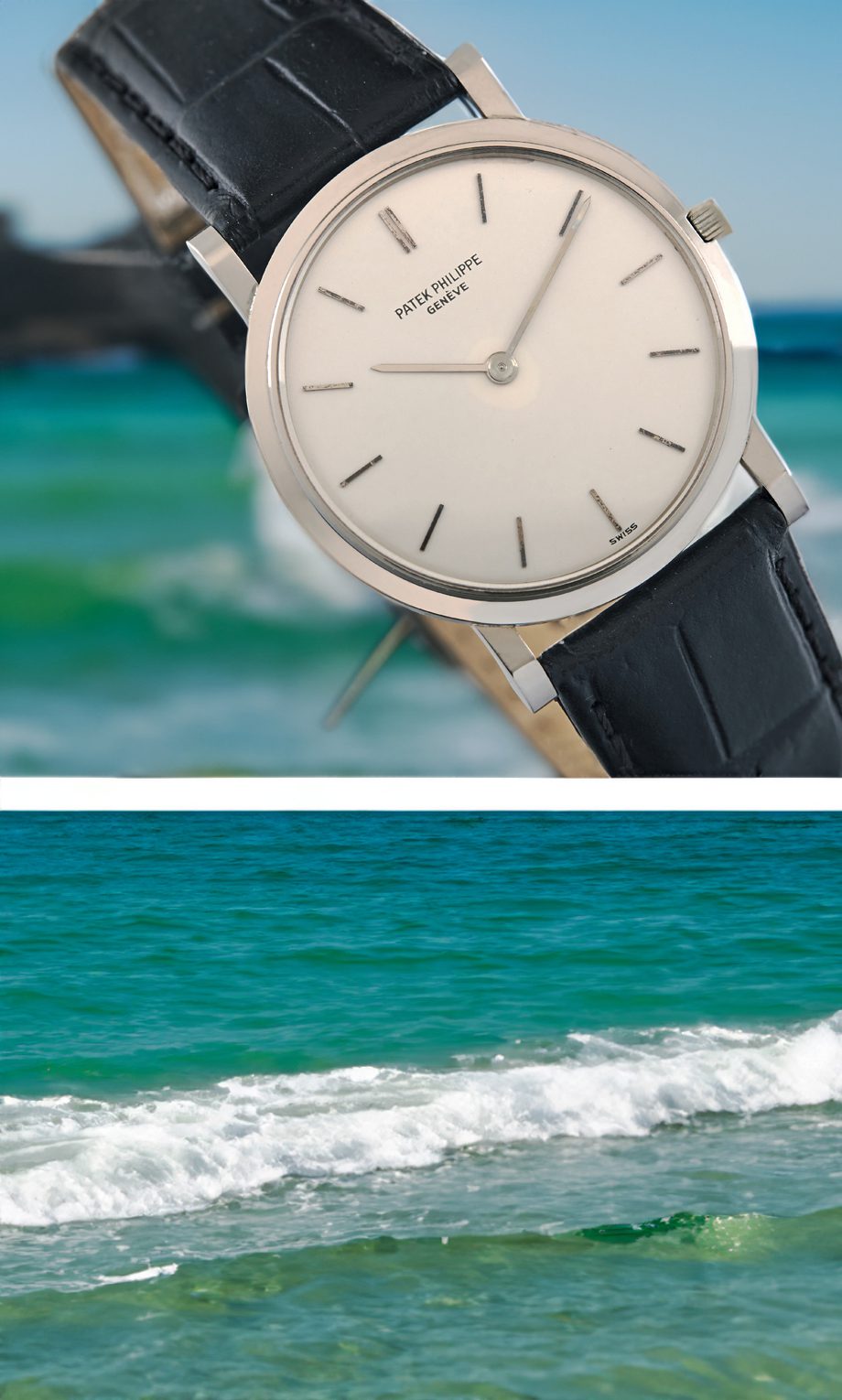
Patek Phillipe Calatrava
There have been many iconic watches created throughout the history of Patek Philippe, but few have gained as much respect as the Calatrava. With its slimline case, minimalist dial and exquisite detailing, this is the watch that has come to most signify Patek Philippe’s design philosophy.
The Calatrava was so pioneering that it was the first watch to be known by its name rather than its reference number, as all watches were up until this point. The Calatrava took its name from the ornate Calatrava cross, the cruciform symbol first used on the marching banners of the Calatrava knights from Spain and Portugal who defended the Calatrava fortress against the Moors in 1158.
The Calatrava symbol was registered as a trademark by Patel Phillipe in 1887, although it only started appearing more regularly on the crowns and movements of Patek Philippe watches from the 1960s onwards. The use of the Calatrava name for its Ref. 96 model gives an indication of its significance to the brand, and indeed it has played a major role ever since.
The epitome of understated elegance, the Patek Philippe Calatrava Reference 96 is considered by many to be the blueprint for the ultimate dress watch. Inspired by the Bauhaus minimalist design principles the watch was launched in 1932 in the midst of the great depression. This influence can be seen clearly in the simple, elegant and non-superfluous design that has become the essence of Patek Phillipe.
The first Calatrava featured a hand-wound movement with small seconds and a plain white enamel dial featuring simple gold-plated batten indices. This was complemented by elegant Dauphine style hands also in gold. In 1953, Patek launched an automatic version of the watch ref. 2526 powered by the legendary 12-600 AT movement. This watch featured several firsts for Patek, an automatic winding mechanism, a Gyromax balance wheel and a water-resistant case. Through the 1970s Patek continued to tinker with the movements until settling on the calibre 324 SC movement that is still used to power Calatrava’s today.
The Patek Philippe Calatrava Ref. 96 was in production for over 40 years (1932 – 1973), a testament to its incredible success and popularity. Throughout that period multiple variations were developed. It is partly this that makes collecting Calatrava Ref 96’s so interesting and fun. You never know what you might discover and there is almost endless variety, plus several variations often appear in the same model.
The Calatrava is one of the finest examples of a simple and utterly timeless-looking watch. Today, the scarcity of Patel Phillipe watches means that demand continues to grow around the world with less than 1 million Patek Philippe watches said to have been produced since 1839. This is less than what some high-end Swiss manufacturers produce in a year, making genuine good-conditioned vintage Calatrava’s the holy grail for some collectors.
Browse vintage Patek Phillipe Calatrava’s here.

Rolex Submariner
The Rolex Submariner was the first wristwatch ever made specifically for scuba diving thanks to its groundbreaking water and pressure-resistant casing that was initially born out of the Oyster Perpetual casing of the mid-1930s. This is another legendary tool watch to make the final cut of the most iconic list for some very solid reasons. It really cannot be underestimated just how big an impact the Rolex Submariner has made on the world of watchmaking over the years.
Originally released in 1954, the Rolex Submariner is arguably the most copied watch design of all time. The unique elegance of the Submariner’s design meant that it quickly gained mainstream appeal as a watch for all occasions, not just as a divers tool watch.
The earliest Submariner references of the 1950s, featured 37mm steel cases, no crown guards around the winding crown, and radium-based luminescence. Rolex manufactured a range of references during this period, with various water depth ratings (100m to 200m), crown sizes, and dial styles (pencil hands, Mercedes hands, and Explorer-style dials). These various models are very rare and incredibly sought after by collectors.
The many Submariner iterations continued throughout the 60s and 70s. Rolex introduced the Submariner Date in the late 1960s with a calendar function complete with a ‘cyclops’ magnification lens. The updated model offered customers more of a status symbol than a purpose-built diving watch, appealing to a wider audience. The inclusion of a date window and the production of the first gold Submariner was not useful for divers but appealing to the mass market, who was completely enamoured by the Submariner, and continue to be so.
The history of the Rolex Submariner is entwined in mainstream culture. It has been featured in movies and on the wrists of the rich and famous for decades, pushing it into superstar status as possibly the most recognised watch ever made. Most notably, the Rolex Submariner appeared in 9 James Bond movies since the 1960s, proudly displayed on the wrists of the much-loved character 007.
Despite its constant evolution, at its core the modern Submariner is very much the same watch that Rolex first launched more than 70 years ago. That is a testament to the design and engineering prowess of this absolute classic.
Browse vintage Rolex Submariner’s here.
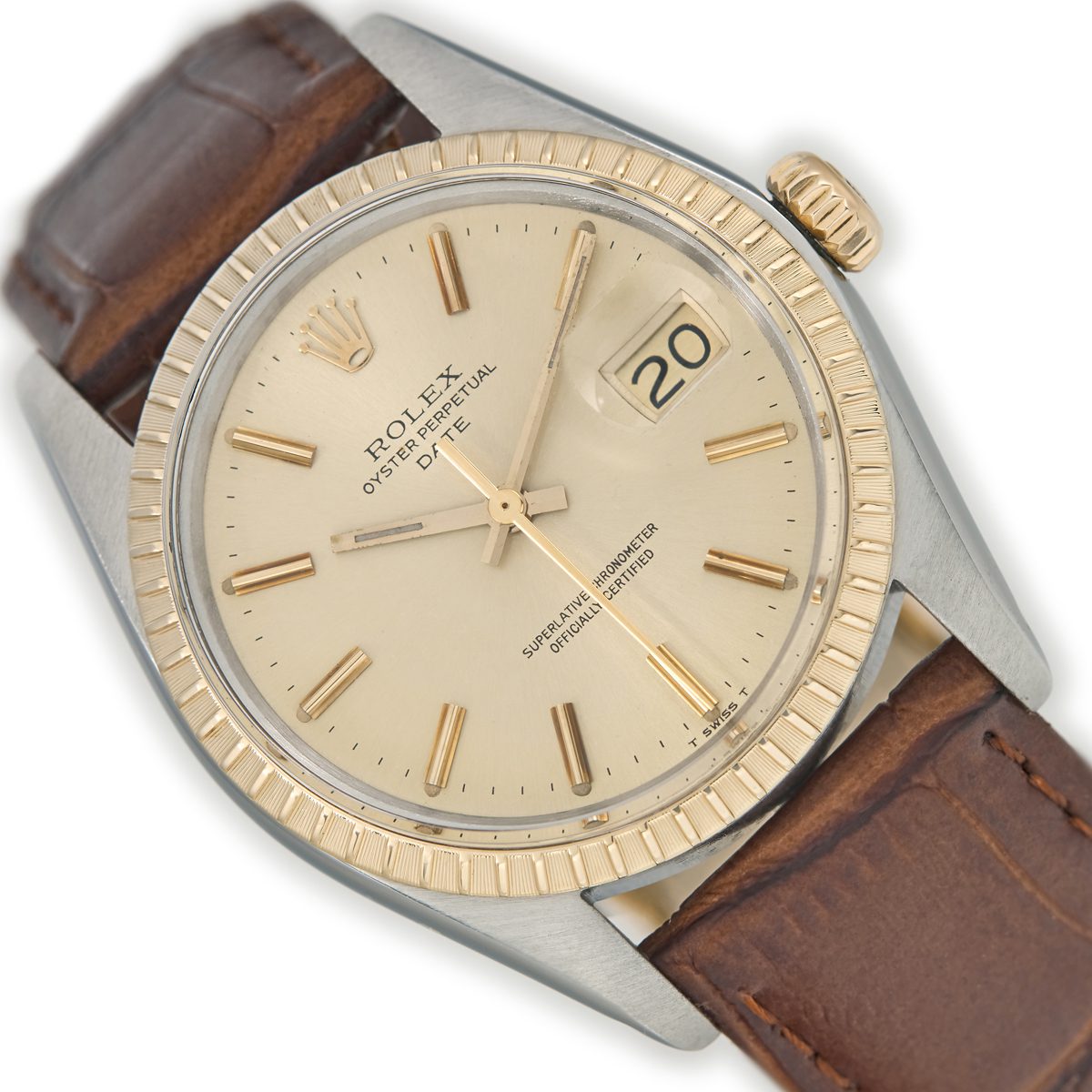
Rolex Daytona
The Rolex Daytona has come to epitomise the Rolex brand. Over the 60+ years since its first launch, it remains as desirable and recognisable as ever.
The Rolex Daytona was originally known simply as the Cosmograph. Created in 1963, it first appeared in the form of the Ref. 6239 – a stainless-steel model, featuring a matching bezel with an engraved tachometer scale. This new watch stood out for the chronograph sub-dials in a contrasting colour to the main dial, with black counters on a light-coloured dial or light-coloured counters on a black dial.
From the very beginning, the Cosmograph’s design aim was to meet the demands of professional racing drivers with a tachometer and the ability to accurately time to 1/5 of a second. The watch didn’t immediately catch on commercially. One reason for this was the initial size of 36.5 mm, which was considered quite large at the time and not in keeping with the fashion for slimline wristwatches. The modern Daytona now has a 40 mm diameter and the chronograph central sweep seconds hand allows an accurate reading of 1/8 of a second.
By 1965, it had evolved to also offer a bezel with an acrylic insert and screw-down pushers. Around the same time, the name Daytona started to appear on the dials. First only in the U.S. market to solidify Rolex’s partnership with Daytona Speedway racing in the minds of the US market, but soon across other markets too. The name Daytona was taken from the famous Florida city, Daytona, which was home of speedway car racing and hosted multiple land speed record attempts at the Daytona International Speedway.
Daytona’s infamy is partly due to its charismatic customers, who often became unwitting ambassadors of the brand. Paul Newman is a case in point. A world-famous actor and racecar driver of the time who wore his Rolex Daytona in all his races. Ref. 6239 introduced the unique “exotic dials” with an easily recognisable contrasting scale for chronograph seconds.
Initially seen as undesirable, the Ref. 6239 exotic dial later became known by collectors as the “Paul Newman” and became significantly more desirable and valuable than the comparable standard dials thanks to the legendary ownership by Paul Newman himself.
As a sports watch, the Daytona should technically always be Oystersteel (stainless steel), as was the case originally. However, having morphed into an everyday watch and coveted collector’s piece, other versions are now available. This includes Oystersteel and 18-carat gold, pink gold, yellow gold, white gold, or platinum.
The use of 18-carat gold ensures durability, not to mention it makes it easier to polish over any scratches. These materials mean the Daytona is perfectly able to handle the knocks of everyday life. The Daytona continues to be as relevant today as it was in the 1960s and looks set to maintain its reign as a vintage icon and as a modern-day classic.
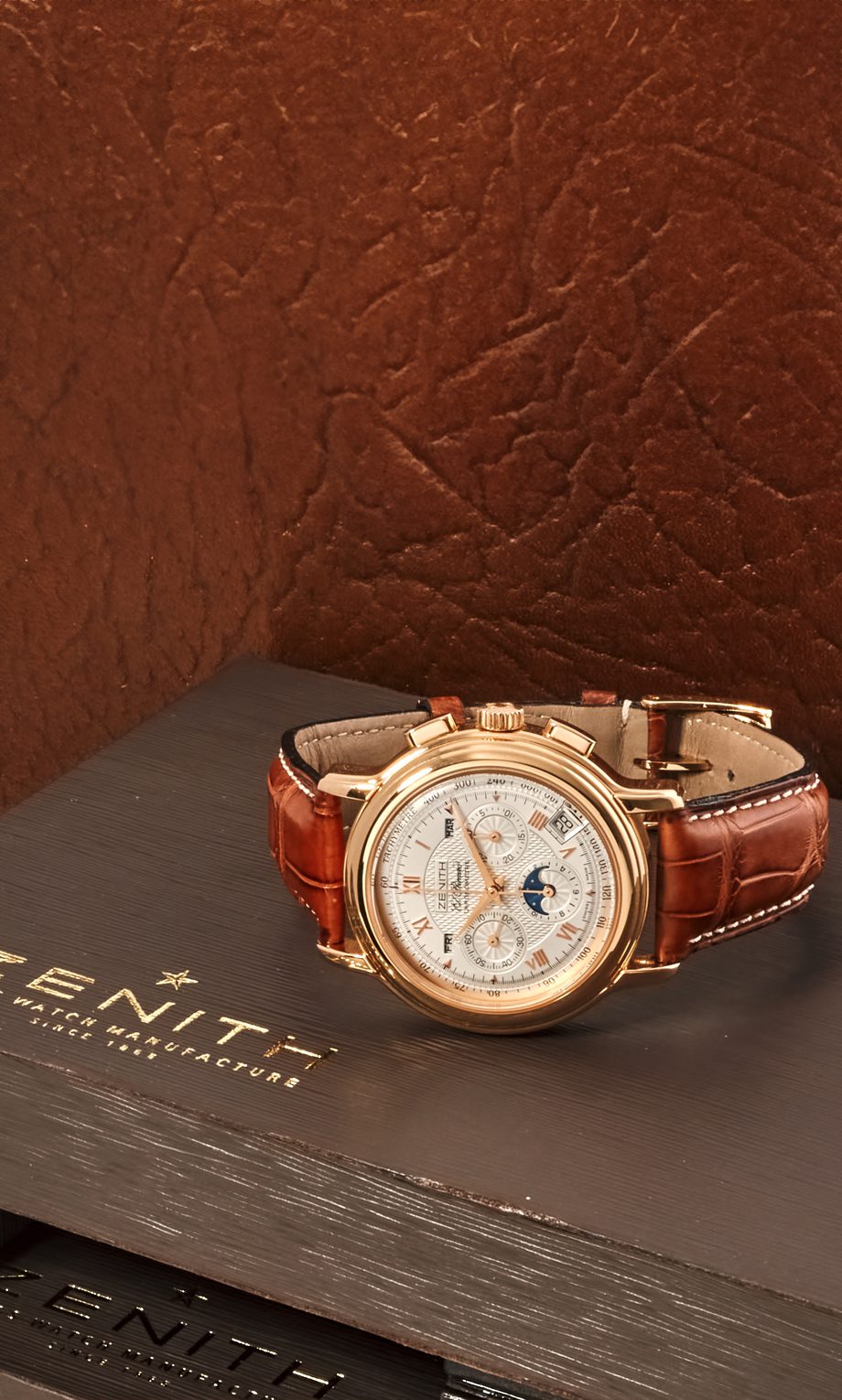
Zenith El Primero
The El Primero has always been exceptional, from the very first moment it was unveiled to the world it has continued to be adored by watch lovers all over the world who consider it to have the world’s best and most accurate movements. From the technical revolution it represented at its origin to the legendary role it played in the post-Quartz Crisis revival of the mechanical watch, the El Primero, as its name suggests, has achieved many firsts.
Zenith launched the El Primero in 1969 as one of the movements in the “race” for the world’s first automatic chronograph. Competing against the big names of the time; Büren, Hamilton, Breitling, Heuer and Seiko were all busy trying to achieve the technical feat of creating an accurate automatic chronograph that would fit inside a slim casing.
The El Primero, meaning first in Spanish, was unveiled in January 1969, 4 months ahead of the Büren/Hamilton/Breitling/Heuer collaboration which launched their Calibre 11 Chronomatic in May of 1969. However, the winner of this innovation race is still challenged to this day as competitors began selling their new automatic chronographs to the public 3 months before Zenith. Despite competitors being hot on the heels of Zenith’s pioneering watch, no one could steal the limelight from the El Primero.
The El Primero was astonishing, achieving many design and engineering firsts, it amazed the watch industry and the public alike. It measured 29 mm in diameter and was a mere 6.5 mm tall – even slimmer than traditional chronographs. A dry lubricant based on molybdenum sulfate was used for the first time which contributed to the calibre’s highly precise rate.
The power reserve boasted 50 hours and the balance had a higher frequency than was normal for the time, beating at a pace of 36,000 vph / 5 Hz, which enabled the chronograph to measure elapsed intervals to the nearest 1/10 of a second. The rotor that wound the movement had a tungsten carbide weight that maximised each motion of the watch wearer’s arm to continually wind the mainspring.
Most calibres in the late 60s were paced at 21,600 vph or less while the Breitling team’s Calibre 11 Chronomatic oscillated at a frequency of 19,800 vph. It was such a leap in technology that this very movement would be found inside legends like the Rolex Daytona for the next 30 years, only coming to an end when Zenith decided to keep their legendary movements for their own watches.
In the same year, another major innovation in the world of watchmaking burst onto the scene, one that would profoundly impact the future of the industry for decades to come: the development of quartz movements. Drawing their energy from electronic batteries rather than traditional mechanical escapements, watches that were fitted with these movements could be mass-produced at a fraction of the cost of a mechanical watch.
At this point, Zenith was bought by another company, due to its failing finances that resulted due to the huge R&D costs incurred developing the El Primero. Its owning company, Zenith Radio Corporation (an unrelated company which made TV sets and radios) regarded electronic timekeeping as the future and decided that mechanical movements were on the way out.
In 1978, everything involved in the production of mechanical watch movements, down to the metal the tools were made of, was ordered to be sold to the highest bidder. It was only thanks to Charles Vermot, Zenith’s chief movement designer, that the El Primero survived—night after night, Vermot would hide presses, plans, and cutting tools in the attic of the factory in the hope of waiting out the turbulent Quartz Crisis and one day being able to resume production of the groundbreaking El Primero. Almost a decade passed before Vermot got his wish and the El Primero was able to rise from its ashes and begin production again, resurrecting Zenith’s mechanical watchmaking. Vermot’s clandestine mission is now the stuff of watchmaking legend and Charles Vermot is the unsung hero of mechanical watchmaking history.
The El Primero is the foundation on which Zenith has built its reputation. The solidity and precision of the 1969 original have been enriched with numerous complications over the years, including a tourbillon, large date, split-seconds mechanism, minute repeater, alarm, retrograde date and jumping seconds. For watch collectors and admirers, El Primero will always be The First.
Browse vintage Zenith El Primero’s here.
Not All Good Things Come To An End
We hope you’ve enjoyed this jaunt through watchmaking history stopping off to admire the five most iconic watches ever made, according to us at Vintage Gold Watches. As with all top fives or top tens, it’s bound to spark some debate. If you don’t agree with our final five most iconic watches ever made maybe it will prompt you to debate your own top five.
If you’d like to stay up to date on vintage watch news and be the first to see the latest watches added to our collection sign up for our weekly newsletter.

